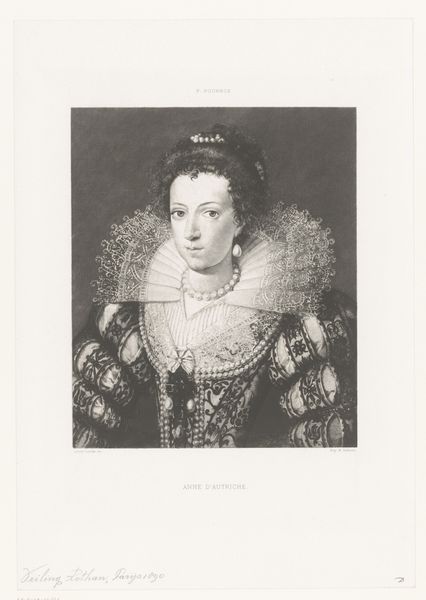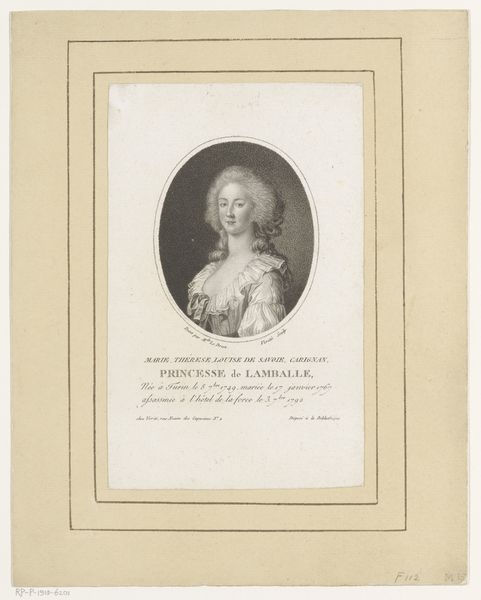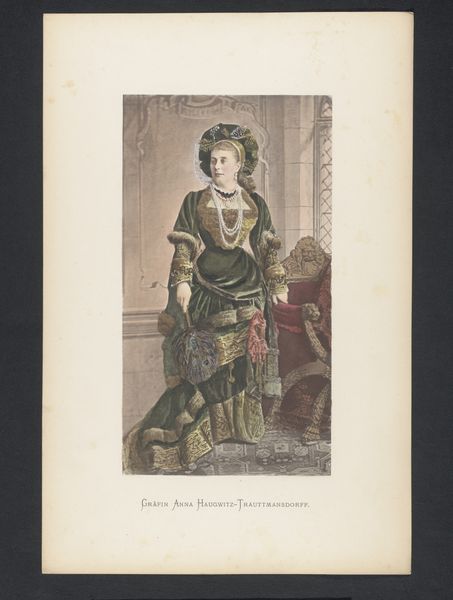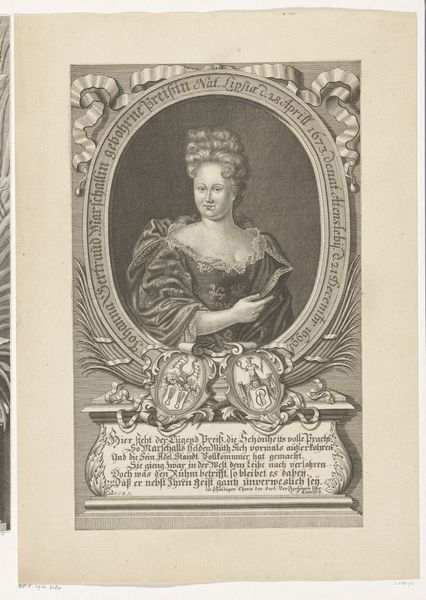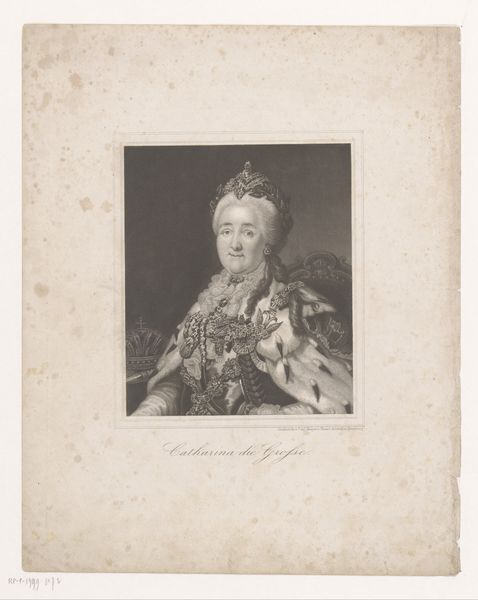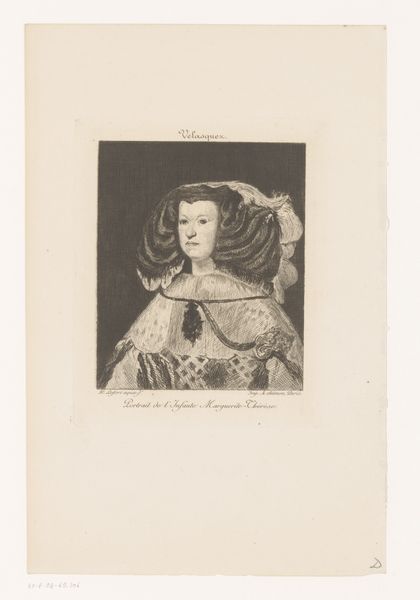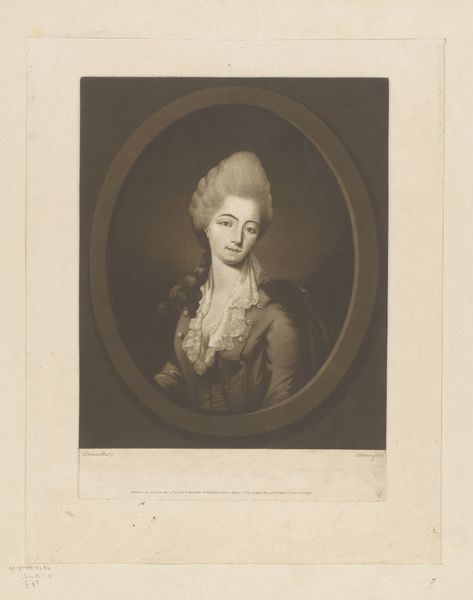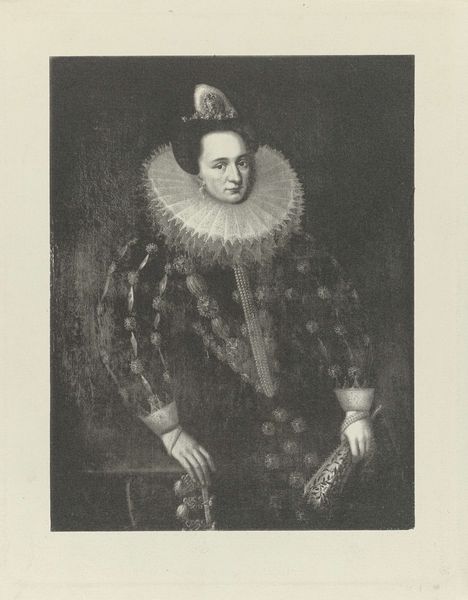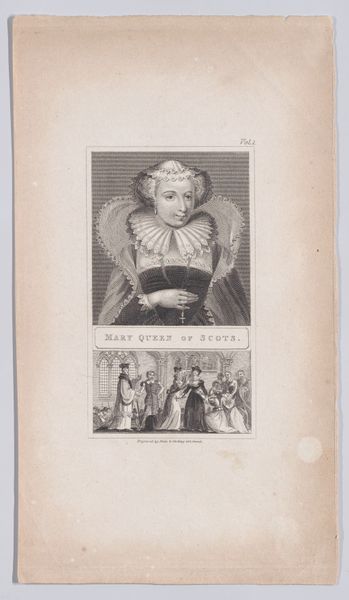
Mary, Queen of Scots (from "Galerie du Palais Royal," plate 25) 1821 - 1831
0:00
0:00
drawing, print, engraving
#
portrait
#
drawing
#
medieval
# print
#
france
#
history-painting
#
academic-art
#
engraving
Dimensions: Sheet: 16 in. × 12 5/16 in. (40.6 × 31.2 cm)
Copyright: Public Domain
Henri Grevedon made this print of Mary, Queen of Scots, sometime before his death in 1860. It's a lithograph, a process that democratized image-making in the 19th century. Unlike earlier, more laborious printmaking methods like engraving, lithography allowed for relatively quick reproduction. You can see the subtle gradations of tone, achieved by applying greasy ink to a smooth stone surface. The texture isn't incised, but drawn. This made it easier to capture the likeness of a portrait. Consider all the skilled labor involved in the Queen's attire. The lace collar alone would have taken weeks to make by hand. The jewels on her dress, each one individually crafted and sewn in place, speak to the vast resources at her command. The print flattens all this into a single, reproducible image. In its own way, this lithograph also depended on specialized labor: the quarrying of the limestone, the preparation of the printing surface, the skilled hand of the printer. Appreciating this print means recognizing the many hands, materials, and social conditions that came together in its making.
Comments
No comments
Be the first to comment and join the conversation on the ultimate creative platform.

